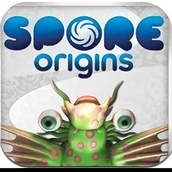Erlang 帮你解决“斑马谜题”问题
斑马谜题是个典型的 约束满足问题(CSPs). 数独, 幻方也属于 CSPs 问题. Erlang 的列表解析等语言特性让它能够以一种非常贴近自然语言的描述方式来解决这类问题: 不需要考虑过程式的求解步骤, 描述好约束条件, Erlang 解释器通过域搜索匹配出了答案. 有人还用 Erlang 写了一个对于有限域约束(Finite Domain Constraints) 的一个扩展.
用 Erlang 的列表解析生成所有三阶幻方是如此简单:
%% magicsquare.erl
-module(magicsquare).
-export([magicsquare/0]).
magicsquare() ->
[ {A00, A01, A02, A10, A11, A12, A20, A21, A22} ||
A00 <- lists:seq(1, 9),
A01 <- lists:seq(1, 9) -- [A00],
A02 <- lists:seq(1, 9) -- [A00, A01],
A10 <- lists:seq(1, 9) -- [A00, A01, A02],
A11 <- lists:seq(1, 9) -- [A00, A01, A02, A10],
A12 <- lists:seq(1, 9) -- [A00, A01, A02, A10, A11],
A20 <- lists:seq(1, 9) -- [A00, A01, A02, A10, A11, A12],
A21 <- lists:seq(1, 9) -- [A00, A01, A02, A10, A11, A12, A20],
A22 <- lists:seq(1, 9) -- [A00, A01, A02, A10, A11, A12, A20, A21],
%% 每一行的和都为 15
A00 + A01 + A02 =:= 15,
A10 + A11 + A12 =:= 15,
A20 + A21 + A22 =:= 15,
%% 每一列的和都为 15
A00 + A10 + A20 =:= 15,
A01 + A11 + A21 =:= 15,
A02 + A12 + A22 =:= 15,
%% 对角线的和为 15
A00 + A11 + A22 =:= 15,
A02 + A11 + A20 =:= 15
].
既然著名的斑马谜题和幻方是同样类型的问题, 按理说用 Erlang 写个求解程序也不是个难事. 先把斑马问题贴出来:
Five men of different nationality (England, Spain, Japan, Italy, Norway) live in the first five houses on a street. They all each have a profession (painter, diplomat, violinist, doctor, sculptor), one animal (dog, zebra, fox, snail, horse), and one favorite drink (juice, water, tea, coffee, milk), all different from the others. Each of the houses is painted in a color different from all the others (green, red, yellow, blue, white).
Furthermore:
The Englishman lives in the red house.
The Spaniard owns the dog.
The Japanese is the painter.
The Italian likes tea.
The Norwegian lives in the leftmost house.
The owner of the green house likes coffee.
The green house is to the right of the white one.
The sculptor breeds snails.
The diplomat lives in the yellow house.
Milk is drunk in the third house.
The Norwegian's house is next to the blue one.
The violinist likes juice.
The fox is in the house next to the doctor's house.
The horse is in the house next to the diplomat's.
The problem is thus to infer who owns the zebra and who drinks water.
为方便程序描述问题, 先为 国籍, 职业, 颜色, 宠物, 饮料 这五项的内容映射到 1~5 这几个数字去:
House: L to R 1 2 3 4 5
Nation England Spain Japan Italy Norway
Profession painter diplomat violinist doctor sculptor
Color green red yellow blue white
Animal dog zebra fox snail horse
Drink juice water tea coffee milk
然后就可以用 Erlang 描述问题了:
%% zebra.erl version 1
-module(zebra).
-compile(export_all).
perms([]) -> [[]];
perms(L) -> [[H|T] || H <- L, T <- perms(L--[H])].
full_perms(N) ->
perms(lists:seq(1, N)).
zebra() ->
[ {N, C, P, A, D} ||
N <- full_perms(5),
C <- full_perms(5),
P <- full_perms(5),
A <- full_perms(5),
D <- full_perms(5),
lists:nth(1, N) =:= lists:nth(2, C), % 条件1
lists:nth(2, N) =:= lists:nth(1, A), % 条件2
lists:nth(3, N) =:= lists:nth(1, P), % 条件3
lists:nth(4, N) =:= lists:nth(3, D), % 条件4
lists:nth(5, N) =:= 1, % 条件5
lists:nth(1, C) =:= lists:nth(4, D), % 条件6
lists:nth(5, C) + 1 =:= lists:nth(1, C), % 条件7
lists:nth(5, P) =:= lists:nth(4, A), % 条件8
lists:nth(2, P) =:= lists:nth(3, C), % 条件9
lists:nth(5, D) =:= 3, % 条件10
(((lists:nth(5, N) + 1) =:= lists:nth(4, C)) orelse ((lists:nth(4, C) + 1) =:= lists:nth(5, N))), % 条件11
lists:nth(3, P) =:= lists:nth(1, D), % 条件12
(((lists:nth(3, A) + 1) =:= lists:nth(4, P)) orelse ((lists:nth(4, P) + 1) =:= lists:nth(3, A))), % 条件13
(((lists:nth(5, A) + 1) =:= lists:nth(2, P)) orelse ((lists:nth(2, P) + 1) =:= lists:nth(5, A))) % 条件14
].
编译运行:
$ erl
1> c(zebra).
{ok, zebra}
2> zebra:zebra().
[{[3,4,5,2,1],
[5,3,1,2,4],
[5,1,4,2,3],
[4,5,1,3,2],
[4,1,2,5,3]}]
不错, 寥寥二三十行代码(大部分是在阐述约束条件)可以求解出正确答案了. 可是它运行得非常慢, 在我的机器上大概花了一两个小时! 而且得出的答案还需要人工将数字映射到对应的属性去.
先来解决运行慢的问题: 还记得计算机程序的构造和解释SICP练习4.39这个问题吗? 约束条件的顺序不会影响答案, 但会影响程序执行时搜索范围的大小, 导致不同的约束条件的顺序运行的时间相差巨大. 把约束性强的条件放在前面, 将显著减少搜索范围, 降低运行时间. 调整下上面的zebra求解代码, 就瞬间解出了答案:
%% zebra.erl version2
-module(zebra).
-compile(export_all).
perms([]) -> [[]];
perms(L) -> [[H|T] || H <- L, T <- perms(L--[H])].
full_perms(N) ->
perms(lists:seq(1, N)).
zebra() ->
[ {N, C, P, A, D} ||
N <- full_perms(5),
lists:nth(5, N) =:= 1, % 条件5
C <- full_perms(5),
(((lists:nth(5, N) + 1) =:= lists:nth(4, C)) orelse ((lists:nth(4, C) + 1) =:= lists:nth(5, N))), % 条件11
lists:nth(1, N) =:= lists:nth(2, C), % 条件1
lists:nth(5, C) + 1 =:= lists:nth(1, C), % 条件7
P <- full_perms(5),
lists:nth(3, N) =:= lists:nth(1, P), % 条件3
lists:nth(2, P) =:= lists:nth(3, C), % 条件9
A <- full_perms(5),
lists:nth(2, N) =:= lists:nth(1, A), % 条件2
lists:nth(5, P) =:= lists:nth(4, A), % 条件8
(((lists:nth(3, A) + 1) =:= lists:nth(4, P)) orelse ((lists:nth(4, P) + 1) =:= lists:nth(3, A))), % 条件13
(((lists:nth(5, A) + 1) =:= lists:nth(2, P)) orelse ((lists:nth(2, P) + 1) =:= lists:nth(5, A))), % 条件14
D <- full_perms(5),
lists:nth(5, D) =:= 3, % 条件10
lists:nth(4, N) =:= lists:nth(3, D), % 条件4
lists:nth(1, C) =:= lists:nth(4, D), % 条件6
lists:nth(3, P) =:= lists:nth(1, D) % 条件12
].
解决了性能问题, 再来完善一下程序, 在程序里面映射好各种属性, 这样就能更好地描述约束条件了. 完整的 Erlang 代码如下:
%% zebra.erl final version
-module(zebra).
-export([zebra/0, zebra_print/0, who_own_zebra/0]).
%% @spec (List::list(), Ele) -> integer()
%% @doc Returns the position of `Ele' in the `List'. 0 is returned
%% when `Ele' is not found.
%% @end
pos(List, Ele) ->
pos(List, Ele, 1).
pos([Ele | _Tail], Ele, Pos) ->
Pos;
pos([_ | Tail], Ele, Pos) ->
pos(Tail, Ele, Pos+1);
pos([], _Ele, _) ->
0.
nation() -> ['England', 'Spain', 'Japan', 'Italy', 'Norway'].
profession() -> [painter, diplomat, violinist, doctor, sculptor].
color() -> [green, red, yellow, blue, white].
animal() -> [dog, zebra, fox, snail, horse].
drink() -> [juice, water, tea, coffee, milk].
data_inx(N, Data) ->
lists:nth(N, Data()).
data_pos(Name, Data) ->
pos(Data(), Name).
perms([]) -> [[]];
perms(L) -> [[H|T] || H <- L, T <- perms(L--[H])].
full_perms(N) ->
perms(lists:seq(1, N)).
zebra_print() ->
[io:format("Nation:tt~-12s~-12s~-12s~-12s~-12s~n"
"Color:tt~-12s~-12s~-12s~-12s~-12s~n"
"Profession:t~-12s~-12s~-12s~-12s~-12s~n"
"Animal:tt~-12s~-12s~-12s~-12s~-12s~n"
"Drink:tt~-12s~-12s~-12s~-12s~-12s~n~n",
[data_inx(pos(N, 1), fun nation/0),
data_inx(pos(N, 2), fun nation/0),
data_inx(pos(N, 3), fun nation/0),
data_inx(pos(N, 4), fun nation/0),
data_inx(pos(N, 5), fun nation/0),
data_inx(pos(C, 1), fun color/0),
data_inx(pos(C, 2), fun color/0),
data_inx(pos(C, 3), fun color/0),
data_inx(pos(C, 4), fun color/0),
data_inx(pos(C, 5), fun color/0),
data_inx(pos(P, 1), fun profession/0),
data_inx(pos(P, 2), fun profession/0),
data_inx(pos(P, 3), fun profession/0),
data_inx(pos(P, 4), fun profession/0),
data_inx(pos(P, 5), fun profession/0),
data_inx(pos(A, 1), fun animal/0),
data_inx(pos(A, 2), fun animal/0),
data_inx(pos(A, 3), fun animal/0),
data_inx(pos(A, 4), fun animal/0),
data_inx(pos(A, 5), fun animal/0),
data_inx(pos(D, 1), fun drink/0),
data_inx(pos(D, 2), fun drink/0),
data_inx(pos(D, 3), fun drink/0),
data_inx(pos(D, 4), fun drink/0),
data_inx(pos(D, 5), fun drink/0)]) ||
{N, C, P, A, D} <- zebra()
].
who_own_zebra() ->
[data_inx(pos(N, pos(A, data_pos(zebra, fun animal/0))), fun nation/0) ||
{N, _C, _P, A, _D} <- zebra()
].
zebra() ->
[{N, C, P, A, D} ||
N <- full_perms(5),
%% The Norwegian lives in the leftmost house
lists:nth(data_pos('Norway', fun nation/0), N) =:= 1,
C <- full_perms(5),
%% The Norwegian's house is next to the blue one
(((lists:nth(data_pos('Norway', fun nation/0), N) + 1) =:=
lists:nth(data_pos(blue, fun color/0), C)) orelse
((lists:nth(4, C) + 1) =:= lists:nth(5, N))),
%% The Englishman lives in the red house
lists:nth(data_pos('England', fun nation/0), N) =:=
lists:nth(data_pos(red, fun color/0), C),
%% The green house is to the right of the white one
lists:nth(data_pos(white, fun color/0), C) + 1 =:=
lists:nth(data_pos(green, fun color/0), C),
P <- full_perms(5),
%% The Japanese is the painter
lists:nth(data_pos('Japan', fun nation/0), N) =:=
lists:nth(data_pos(painter, fun profession/0), P),
A <- full_perms(5),
%% The Spaniard owns the dog
lists:nth(data_pos('Spain', fun nation/0), N) =:=
lists:nth(data_pos(dog, fun animal/0), A),
%% The sculptor breeds snails
lists:nth(data_pos(sculptor, fun profession/0), P) =:=
lists:nth(data_pos(snail, fun animal/0), A),
D <- full_perms(5),
%% The diplomat lives in the yellow house
lists:nth(data_pos(diplomat, fun profession/0), P) =:=
lists:nth(data_pos(yellow, fun color/0), C),
%% The fox is in the house next to the doctor's house
(((lists:nth(data_pos(fox, fun animal/0), A) + 1) =:=
lists:nth(data_pos(doctor, fun profession/0), P)) orelse
((lists:nth(data_pos(doctor, fun profession/0), P) + 1) =:=
lists:nth(data_pos(fox, fun animal/0), A))),
%% The horse is in the house next to the diplomat's
(((lists:nth(data_pos(horse, fun animal/0), A) + 1) =:=
lists:nth(data_pos(diplomat, fun profession/0), P)) orelse
((lists:nth(data_pos(diplomat, fun profession/0), P) + 1) =:=
lists:nth(data_pos(horse, fun animal/0), A))),
%% Milk is drunk in the third house
lists:nth(data_pos(milk, fun drink/0), D) =:= 3,
%% The Italian likes tea
lists:nth(data_pos('Italy', fun nation/0), N) =:=
lists:nth(data_pos(tea, fun drink/0), D),
%% The owner of the green house likes coffee
lists:nth(data_pos(green, fun color/0), C) =:=
lists:nth(data_pos(coffee, fun drink/0), D),
%% The violinist likes juice
lists:nth(data_pos(violinist, fun profession/0), P) =:=
lists:nth(data_pos(juice, fun drink/0), D)
].
编译运行:
$ erl
>1 c(zebra).
{ok, zebra}
>2 zebra:zebra_print().
Nation: Norway Italy England Spain Japan
Color: yellow blue red white green
Profession: diplomat doctor sculptor violinist painter
Animal: fox horse snail dog zebra
Drink: water tea milk juice coffee
[ok]
>3 zebra:who_own_zebra().
['Japan']
相关文章
精彩推荐
-
 下载
下载孢子2生物进化中文版(Spores)
模拟经营 孢子2生物进化中文版(Spores)孢子2生物进化中文版让我们来做一回疯狂的博士,打造一个属于自
-
 下载
下载叫我万岁爷九游官方版
模拟经营 叫我万岁爷九游官方版叫我万岁爷带你体验当换地点感觉,全新的模拟手游大作让你开始一
-
 下载
下载梦回凤歌
模拟经营 梦回凤歌梦回凤歌手游中你将步入古代的宫廷纷争之中,本想度过美好幸福的
-
 下载
下载洋果子店rose最新版本
模拟经营 洋果子店rose最新版本洋果子店最新版是一款十分容易让人垂涎的开店经营类手游。游戏玩
-
 下载
下载明日大亨最新版
模拟经营 明日大亨最新版明日大亨手游,一个非常经典有趣的模拟经营类型的商战手游,在游















